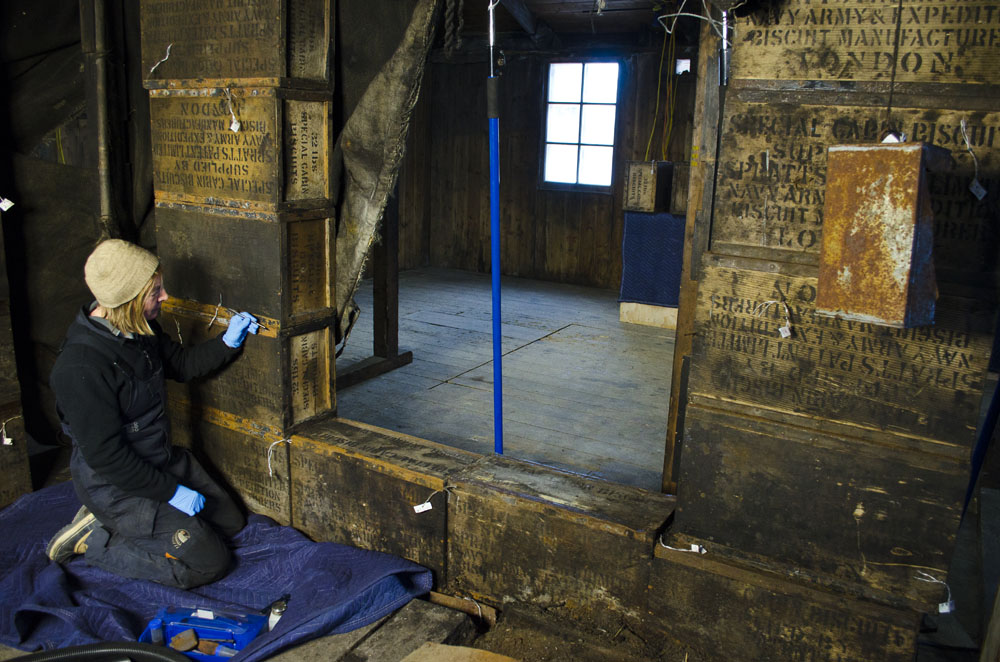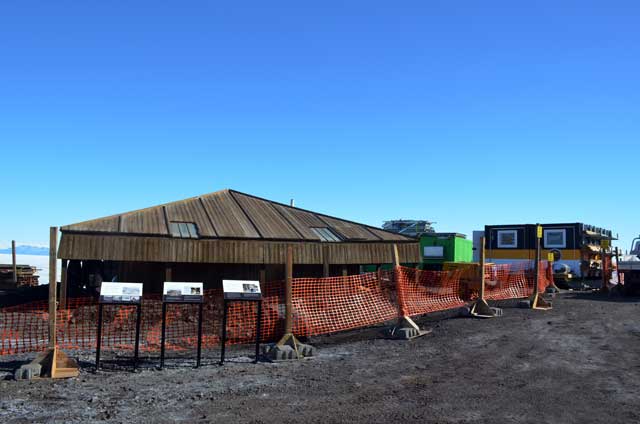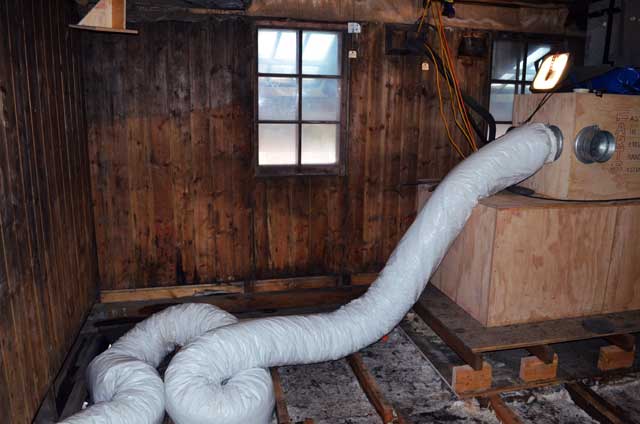|
Page 3/3 - Posted April 18, 2014
Conservation in Antarctica is a labor of love with much work still to comeThe conservation work by the Trust is performed in such a way that visitors to the huts will still only see the footprints of the early explorers. The conservators are nearly obsessive in their fidelity to history. A plank is missing in the floor? A board of the same type, grain and even number of knots is found to replace it. Special glass is on order to restore the double-glazed windows that contained a layer of chicken wire between the panes. Previous conservation efforts in the 1960s and 1980s used modern materials to preserve and repair the Ross Sea huts. 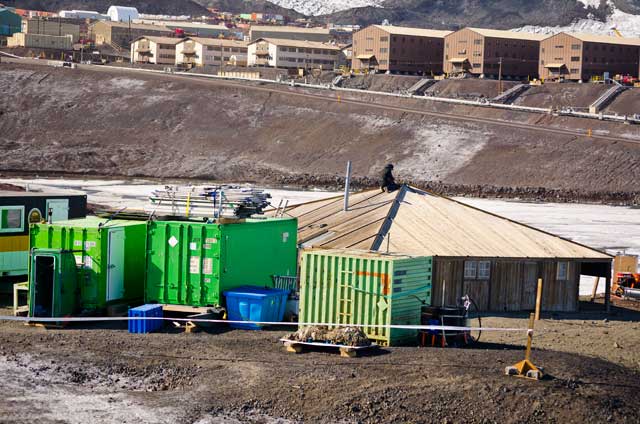
Photo Credit: Peter Rejcek
A conservation carpenter works on the roof of Discovery Hut, located literally down the road from McMurdo Station.
It has taken years for the Trust to develop its conservation techniques, which are among the best in the industry, according to Macdonald. “There’s not much we can’t take on. It wasn’t like that in the beginning. This is something we’ve built up over the last decade,” he says. “I’ve worked on projects all over the world. I have to say the work we’re doing now is of a standard that is equal to or better than the work that is done in most major cities.” A small carpentry workshop on site is full of all the tools of the trade. A gas generator provides power. Inside the hut, plywood boxes protect some of the larger artifacts that can’t be relocated to the conservation lab at Scott Base. A radiator blows air through the building to dry out the timber. Notes Adams, the compact conservation carpenter from the UK with a handshake grip as hard as the permafrost, “I’ll probably use things I’ve learned here elsewhere.” A year from now, only the newly preserved artifacts, the gloom and ghosts of the past will still remain. “It was like that at Cape Evans and Cape Royds. ... Both sites looked like industrial work places. Now, it feels as if the men have just left. For me, that’s the sign of success. You can’t see that we’ve actually been here,” Fastier says. “It’s one of the few jobs where you work really hard, long hours, and you don’t really see we’ve been here – other than a building that has been made structurally sound and an artifact collection that has been conserved.” Even then, the job isn’t over. Another important part of the project is ongoing maintenance on the huts. A capital fund has been established to provide money for upkeep of the buildings for the next 25 years, according to Fastier. “It would be naïve to put all this time and effort into the buildings and walk away from them,” he says “It’s no different than a house. If you walk away from it, it will fall into disrepair.” If all goes according to plan, the Trust will also begin perhaps its most logistically ambitious conservation project – the restoration of Norwegian Carsten Borchgrevink’s expedition base at Cape Adare Borchgrevink made the first documented landing on the continent in 1895. Four years later, he returned to Cape Adare and built the first human structures in Antarctica, a couple of small buildings that contain upwards of a thousand artifacts. 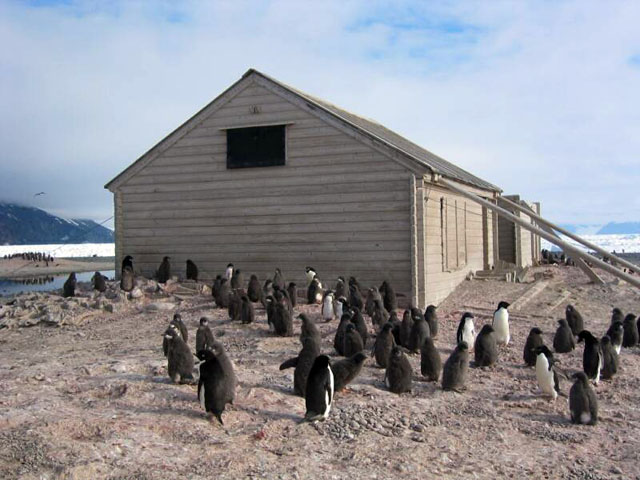
Photo Credit: ©Antarctic Heritage Trust/nzaht.org
Norwegian Carsten Borchgrevink’s expedition base at Cape Adare, about 400 miles from Ross Island, is the next target for the Trust.
The project will require the use of an icebreaker to access the remote peninsula. It will also require a bit of fortitude. Much of the site is covered by penguin guano, as Cape Adare is also home to the world’s largest Adélie penguin colony. “It’s going to be a pretty unpleasant job,” Fastier says. “It will be a pretty smelly job.” The significance of the site, however, has Fastier and his team motivated to get started if access to the site can be worked out. “The cool thing about that building is that it’s the first building built on the Antarctic continent. It’s probably the only first-building-on-a-continent still in existence,” he says. Ice. Cold. Wind. Isolation. Even copious amounts of penguin guano. The conservators of the New Zealand Antarctic Heritage Trust never seem deterred from their mission. “The thing that really draws me to the program and keeps me coming back year on year is the passion of the people involved,” Macdonald says. “It’s not just a construction project or a conservation project. “Without exception – the architects, the engineers, the executive director of the Trust [Nigel Watson] and his staff – they all care so passionately about preserving the stories associated with these buildings. We really see that as a contribution to future generations.” |



For USAP Participants |
For The Public |
For Researchers and EducatorsContact UsU.S. National Science FoundationOffice of Polar Programs Geosciences Directorate 2415 Eisenhower Avenue, Suite W7100 Alexandria, VA 22314 Sign up for the NSF Office of Polar Programs newsletter and events. Feedback Form |

